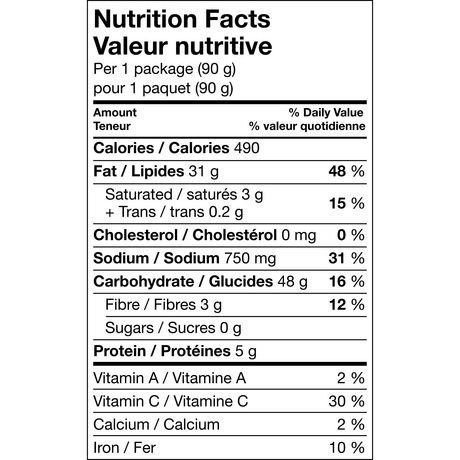Hostess Expiration Codes F020788600
Use By: is the closest to an expiration date similar to that on medicines. Using them after the date is not recommended. In some instances, medicines may be ineffective past their 'use by' date and food may lose nutrients, develop potentially harmful bacteria and lessen in quality. Hostess Donettes Expiration Codes Food product TLC. While there is no standard system for coding on canned foods, many companies use similar codes to track their products. Learning to read the most commonly used codes that refer to dates helps ensure your canned foods are fresh and safe to eat.
Origins: Americans love their snacks, and few snacks are more popular than Hostess Twinkies. Twinkies are cream-filled sponge cakes shaped like ladyfingers which pack Because these cellophane-wrapped snack cakes are always to be found on the shelves at supermarkets and corner stores and always appear to feel fresh and spongy to the touch, a long-lived myth has sprung up to account for the continual presence of seemingly always-fresh Twinkies. According to lore, Twinkies have multi-year shelf lives and remain edible for decades; this incredible longevity, rumor says, is due to Twinkies not actually being food but rather some strange type of artificial, manufactured item shaped and flavored to resemble a cake-like offering. Bluestacks macbook air. Through the years many of our readers have asked us about this baked product. Each had heard a version of the basic Twinkies legend about unbelievable shelf life brought about through some form of artificial production, either in the ingredients or the manufacturing process used. We’ve seen claims that Twinkies:
As always, the truth is far less exciting than the lore. Twinkies were created in 1930 as ladyfinger-shaped spongecakes enrobing a banana filling at the Hostess bakery in Schiller Park, Illinois. (Hostess is now owned by Kansas City-based Interstate Bakeries Corp.) The product’s name was inspired by a billboard in frosting. Twinkies have a shelf life of After the baking process of the sponge cake portion is completed, cream filling is injected into each Twinkie through three holes in its top (brown) side; the product is then flipped before packaging, turning its bottom into its top. Hostess estimates it uses Twinkies gained notoriety in American jurisprudence in 1979 when the media widely misreported the claim that Dan White, on trial for shooting San Francisco mayor George Moscone and city supervisor Harvey Milk, asserted that his consumption of junk foods such as Twinkies “had left him with diminished capacity for reason.” Free mac android emulator.  According to Hostess, it takes forty-five seconds to explode a Twinkie in a microwave.  Barbara “and far less than forty-five for your mother to pitch a fit over it” Mikkelson  Decoding Food Expiration Dates - CBS News
Expiration dates can be hard to locate on a product and even more challenging to decipher. Currently, the United States does not have a regulated or standard system for coding expiration dates on food, except for those on baby food and infant formula. All other dates and codes are added voluntarily by manufacturers. Whether you’re a consumer who is interested in determining when the product that you want to buy is going to expire, or a grocer who is taking initiative to track expiration dates, learning how to read different types of expiration date codes is an important skill. There are two types of expiration date codes on products. The first type is open dating, which uses a standard time or calendar date. These dates are typically followed by labels, such as “use-by”, “sell-by”, or “pull-by”. Use-by dates are intended for consumers and indicate when a product will start to deteriorate, while the latter two are for grocery stores to know how long to keep products displayed on the shelves. Typically, products are good for seven to ten days past their sell-by or pull-by dates. However, this is only a guideline. For instance, even the posted sell-by or best-if-used-by label found on many dry goods, such as canned food items, may not reflect the most accurate shelf life of these products. Canned goods may in fact last months beyond the expiration code if stored and handled effectively. Closed coding is another form of listing expiration dates on products. These codes are typically a short string of numbers and sometimes letters stamped at the top or bottom of products. Unlike open dating, closed coding is used not by consumers, but by manufacturers to assist with inventory tracking. Given that there is not one unified translation system for closed coding, learning to read these labels can often prove to be tricky. In coding, if letters are used to signify months, “A” will indicate January all the way to December ending with “L”. Mac nox. Next to these letters will typically be numbers indicating the day and the year. However, sometimes the numbered year will come before the letter. On the other hand, if numbers are used to signify the month, 1-9 will represent January to September, while the last three months will be assigned the first letter of their name, respectively (O for October, N for November, and D for December). Codes may also be comprised exclusively of numbers typically presented in the standard order of MMDDYY or YYMMDD (e.g., September 12, 2016 would be 091216 or 160912). Some codes also abide by the Julian calendar, which assigns a number to each day of the year from 1 to 365. In this case, September 12 would be 255. Again, there is no definitive translation system for private expiration codes, as each manufacturer uses their own unique system. Still, learning these various forms of coding could eventually assist in reading these seemingly complex food expiration date codes with a bit more ease. Feel like you’re missing a crucial cause of shrink within your store? Click the link below to download your free “3 Key Factors that Lead to Product Expiration Shrink within Supermarkets” eBook. |